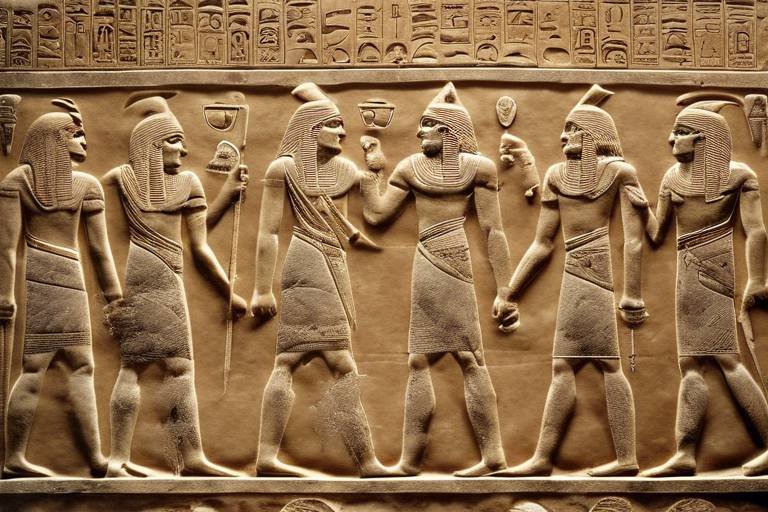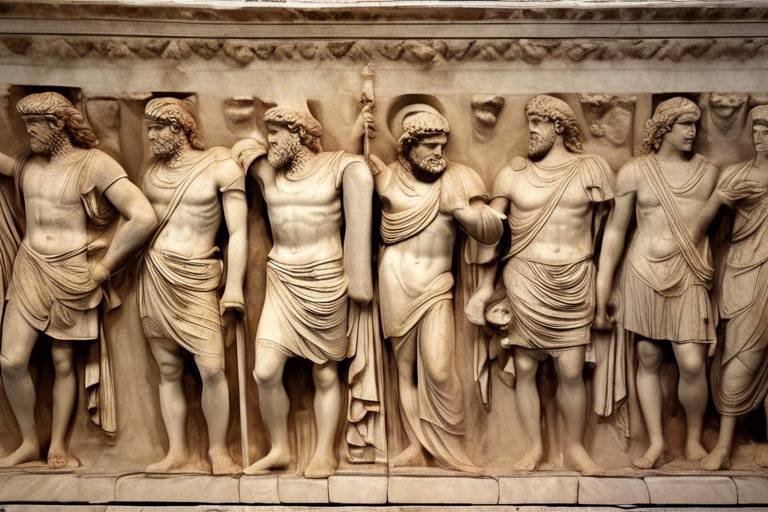The Rise and Fall of the Khmer Empire - Insights
Exploring the historical events that led to the establishment and eventual decline of the powerful Khmer Empire in Southeast Asia offers a fascinating journey through time. The rise of this empire was marked by visionary leadership, innovative architectural feats, and a rich cultural tapestry that captivated the region. However, as with many great civilizations, the Khmer Empire faced its own set of challenges that ultimately contributed to its downfall.
Founded on the principles of power and prosperity, the Khmer Empire emerged as a dominant force in the region, expanding its territories under the rule of ambitious monarchs. The establishment of Angkor as its capital city symbolized the empire's grandeur and ambition, setting the stage for a period of unprecedented growth and influence.
One of the most enduring legacies of the Khmer Empire is its architectural marvels, notably exemplified by the awe-inspiring Angkor Wat. The intricate designs, intricate carvings, and massive scale of these temples reflect the empire's advanced engineering skills and deep-rooted religious beliefs that permeated every aspect of construction.
Delving into the societal structure and cultural practices of the Khmer Empire unveils a vibrant civilization shaped by art, literature, and religious rituals. The daily life of its people was intertwined with elaborate ceremonies, intricate dance forms, and a reverence for the divine that permeated every facet of Khmer society.
Religion played a pivotal role in the Khmer Empire, with Hinduism and later Buddhism shaping its spiritual landscape. The fusion of these faiths with indigenous beliefs gave rise to a unique religious syncretism that influenced art, architecture, and governance, leaving an indelible mark on the empire's identity.
As with all great empires, the Khmer Empire faced internal strife, external invasions, and environmental challenges that gradually eroded its power and stability. The once-mighty empire succumbed to a combination of factors that led to its decline and eventual collapse, marking the end of an era.
Despite its fall, the legacy of the Khmer Empire endures in modern-day Cambodia, evident in its art, architecture, language, and cultural traditions. The influence of this ancient civilization continues to resonate, serving as a testament to the enduring impact of the Khmer people on the cultural landscape of Southeast Asia.
The rediscovery of Angkor in the 19th century by Western explorers sparked a renewed interest in the ancient temples and heritage sites of the Khmer Empire. Restoration efforts have since been undertaken to preserve these architectural wonders, ensuring that future generations can marvel at the splendor of Angkor's legacy.
Reflecting on the rise and fall of the Khmer Empire offers valuable insights into the cyclical nature of history and the enduring lessons that can be gleaned from past civilizations. The legacy of the Khmer Empire continues to inspire scholars, archaeologists, and tourists alike, reminding us of the fragility and resilience of human endeavors throughout the ages.

Founding of the Khmer Empire
The founding of the Khmer Empire traces back to the 9th century when King Jayavarman II established himself as the ruler of the region. With strategic military campaigns and diplomatic alliances, Jayavarman II expanded his territories, laying the foundation for what would become one of the most powerful empires in Southeast Asia. Angkor, situated near modern-day Siem Reap, was chosen as the capital city, symbolizing the empire's grandeur and architectural prowess.
Under subsequent rulers like Indravarman I and Yasovarman I, the Khmer Empire experienced a period of rapid growth and prosperity. These early monarchs not only expanded the empire's borders but also initiated ambitious building projects, including the construction of elaborate temples and reservoirs that showcased the empire's engineering capabilities and devotion to religion.
Angkor, the heart of the Khmer Empire, flourished as a center of art, culture, and commerce, attracting scholars, artisans, and traders from far and wide. The empire's strategic location along major trade routes facilitated the exchange of goods, ideas, and technologies, contributing to its economic prosperity and cultural vibrancy.
The Khmer rulers, known for their divine status and absolute authority, governed the empire with a complex administrative system that encompassed nobility, clergy, and commoners. The society was structured hierarchically, with the king at the pinnacle, followed by the royal court, provincial governors, and village chiefs, ensuring order and stability within the empire.
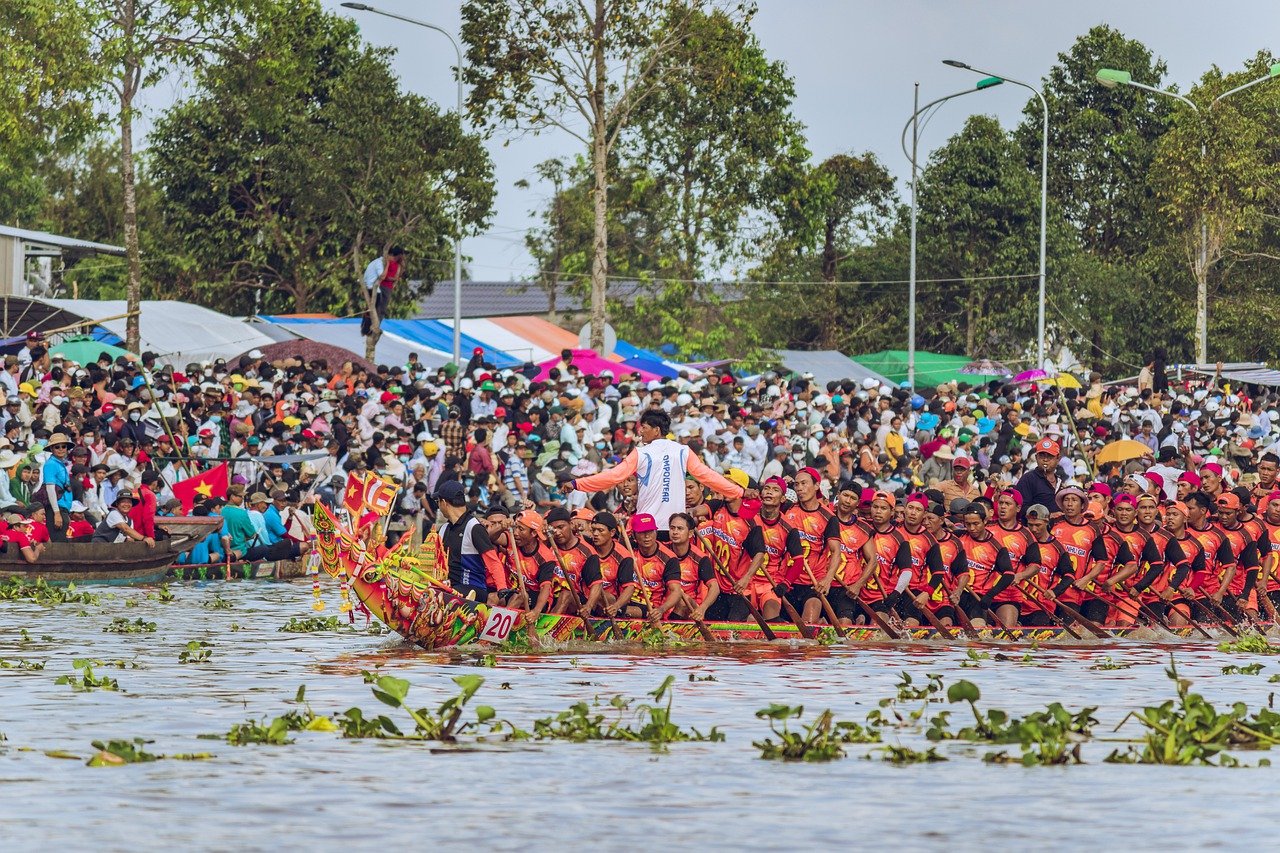
Angkor Wat and Khmer Architecture
Exploring the historical events that led to the establishment and eventual decline of the powerful Khmer Empire in Southeast Asia, offering insights into its governance, architecture, religion, and the factors contributing to its downfall.
Angkor Wat stands as a testament to the architectural prowess of the Khmer Empire, showcasing a harmonious blend of spirituality and engineering excellence. The grandeur of Angkor Wat, along with other Khmer temples, reflects the empire's deep-rooted religious influences and advanced construction techniques.
The Khmer architecture, characterized by intricate carvings, towering spires, and expansive temple complexes, served not only as places of worship but also as symbols of power and cultural identity. The empire's architects and artisans demonstrated a remarkable ability to transform stone into living art, leaving behind a legacy that continues to awe visitors to this day.
Furthermore, the layout of Angkor Wat and other structures within the empire's capital city of Angkor reveals a sophisticated urban planning system, with intricate water management networks and ceremonial avenues that underscore the empire's organizational skills and reverence for divine order.
Here are some common questions about the Khmer Empire and its legacy:
- What was the significance of Angkor Wat?
- How did religion influence Khmer architecture?
- What led to the decline of the Khmer Empire?
- Why is the Khmer Empire still relevant today?
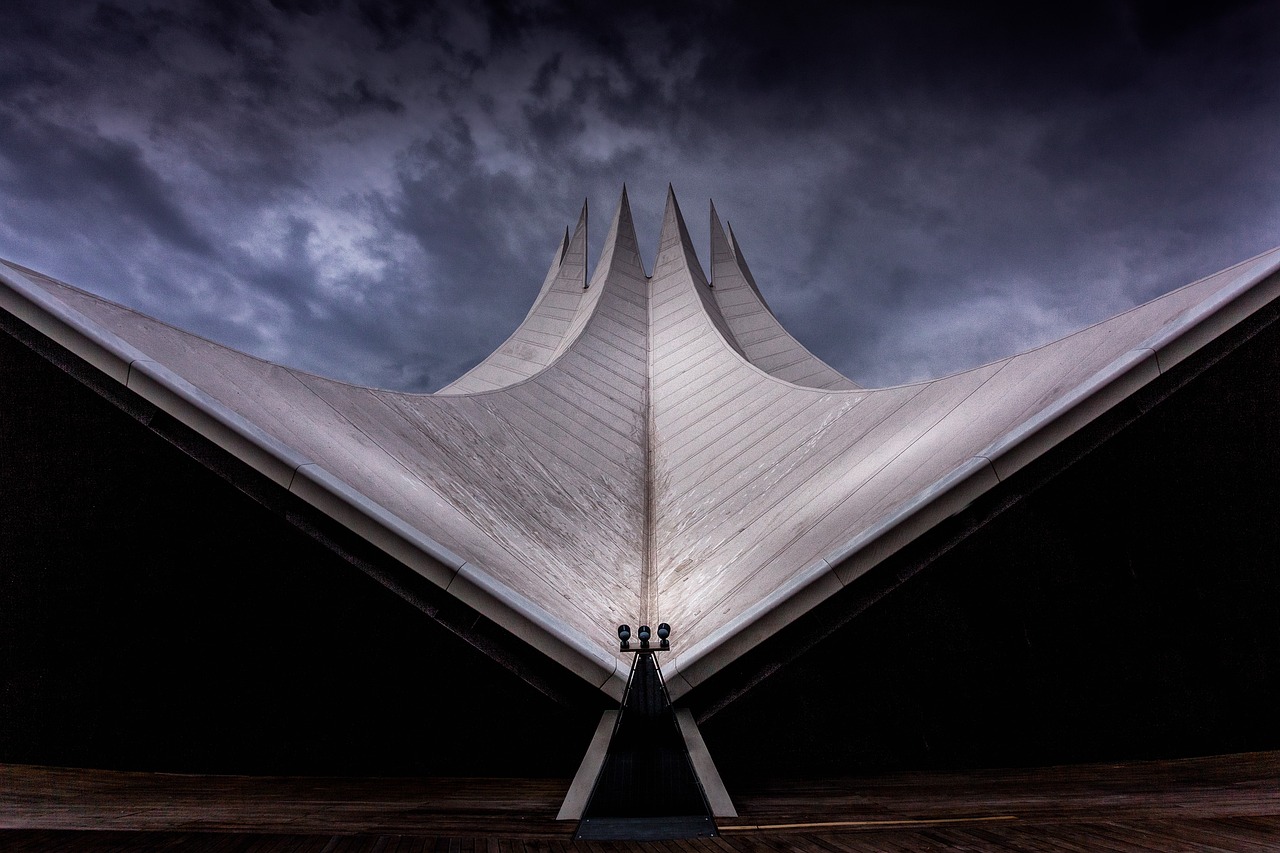
Khmer Society and Culture
Exploring the historical events that led to the establishment and eventual decline of the powerful Khmer Empire in Southeast Asia, offering insights into its governance, architecture, religion, and the factors contributing to its downfall.
Delving into the origins of the Khmer Empire, including the early rulers, expansion of territories, and the establishment of Angkor as its capital city.
Examining the architectural marvels of Angkor Wat and other Khmer temples, showcasing the empire's advanced engineering skills and religious influences in construction.
The Khmer Empire was a vibrant civilization that flourished in Southeast Asia, boasting a rich society and culture that left a lasting legacy. The society was structured hierarchically, with the king at the top, followed by nobles, priests, and commoners. Family played a central role in Khmer society, with strong emphasis on respect for elders and ancestors.
Khmer culture was deeply influenced by Hinduism and later Buddhism, reflected in their art, architecture, and daily rituals. The empire's artistry was evident in intricate sculptures, ornate temples, and elaborate dance performances. Literature also thrived in Khmer society, with epic poems and religious texts being highly valued.
Discussing the dominant role of Hinduism and later Buddhism in shaping the religious landscape of the Khmer Empire, influencing its art, rituals, and governance.
Analyzing the internal strife, external invasions, environmental factors, and other reasons that led to the decline and eventual collapse of the once-mighty Khmer Empire.
Examining the lasting impact of the Khmer Empire on modern-day Cambodia, including its influence on art, architecture, language, and cultural traditions.
Exploring the rediscovery of Angkor in the 19th century by Western explorers and the subsequent restoration efforts to preserve its ancient temples and heritage sites.
Reflecting on the lessons that can be learned from the rise and fall of the Khmer Empire, and how its legacy continues to inspire scholars, archaeologists, and tourists today.
Do you offer guided tours of Angkor Wat?
What are some key features of Khmer architecture?
How did religion influence Khmer society?
What led to the decline of the Khmer Empire?
How has the legacy of the Khmer Empire impacted modern Cambodia?

Religion in the Khmer Empire
Exploring the historical events that led to the establishment and eventual decline of the powerful Khmer Empire in Southeast Asia, offering insights into its governance, architecture, religion, and the factors contributing to its downfall.
Religion played a pivotal role in shaping the identity and culture of the Khmer Empire. Initially, Hinduism was the dominant religion, with the rulers considering themselves as 'devaraja' or god-kings. The influence of Hindu deities like Shiva and Vishnu can be seen in the magnificent temples and sculptures of the empire.
Over time, the empire underwent a significant religious shift towards Buddhism, particularly Mahayana and Theravada traditions. This transition brought about changes in art, architecture, and societal practices, with Buddhist stupas and images becoming prominent in religious structures.
The integration of Buddhism into the Khmer society led to the development of unique rituals and ceremonies, blending elements of Hindu and Buddhist practices. Monasteries and stupas dotted the landscape, symbolizing the empire's devotion to spiritual pursuits alongside earthly power.
The religious beliefs of the Khmer people were intricately linked to the governance of the empire, with rulers justifying their authority through divine mandate. The intertwining of religion and politics created a complex system of power, where religious institutions held significant influence over the affairs of the state.
1. What were the main religions practiced in the Khmer Empire?
2. How did religion influence the architecture of Khmer temples?
3. What role did the god-kings play in the religious landscape of the empire?
4. How did the transition to Buddhism impact Khmer society and culture?
5. Why was religion closely tied to the governance of the Khmer Empire?

Decline of the Khmer Empire
The decline of the Khmer Empire marked a tumultuous period in its history, characterized by internal conflicts, external pressures, and environmental challenges. One of the key factors contributing to the empire's downfall was the internal strife among the ruling elite and the growing power struggles within the royal court. As succession disputes intensified, the unity that once held the empire together began to crumble, weakening its ability to govern effectively.
External invasions also played a significant role in the decline of the Khmer Empire. Constant threats from neighboring kingdoms and regional powers put immense pressure on the empire's borders, leading to frequent military conflicts and territorial losses. These invasions not only drained the empire's resources but also eroded its military strength, making it increasingly vulnerable to external aggression.
Furthermore, environmental factors such as deforestation, droughts, and the depletion of natural resources exacerbated the empire's decline. The extensive clearing of forests for agricultural purposes and the construction of vast water management systems put a strain on the environment, leading to ecological imbalances and agricultural challenges. The inability to sustain its population and maintain its infrastructure further weakened the empire's foundations.
As the internal conflicts, external invasions, and environmental pressures continued to escalate, the Khmer Empire struggled to maintain its once-dominant position in Southeast Asia. The combination of these factors ultimately contributed to the gradual decline and eventual collapse of this once-great civilization, leaving behind a legacy that continues to intrigue historians and archaeologists to this day.
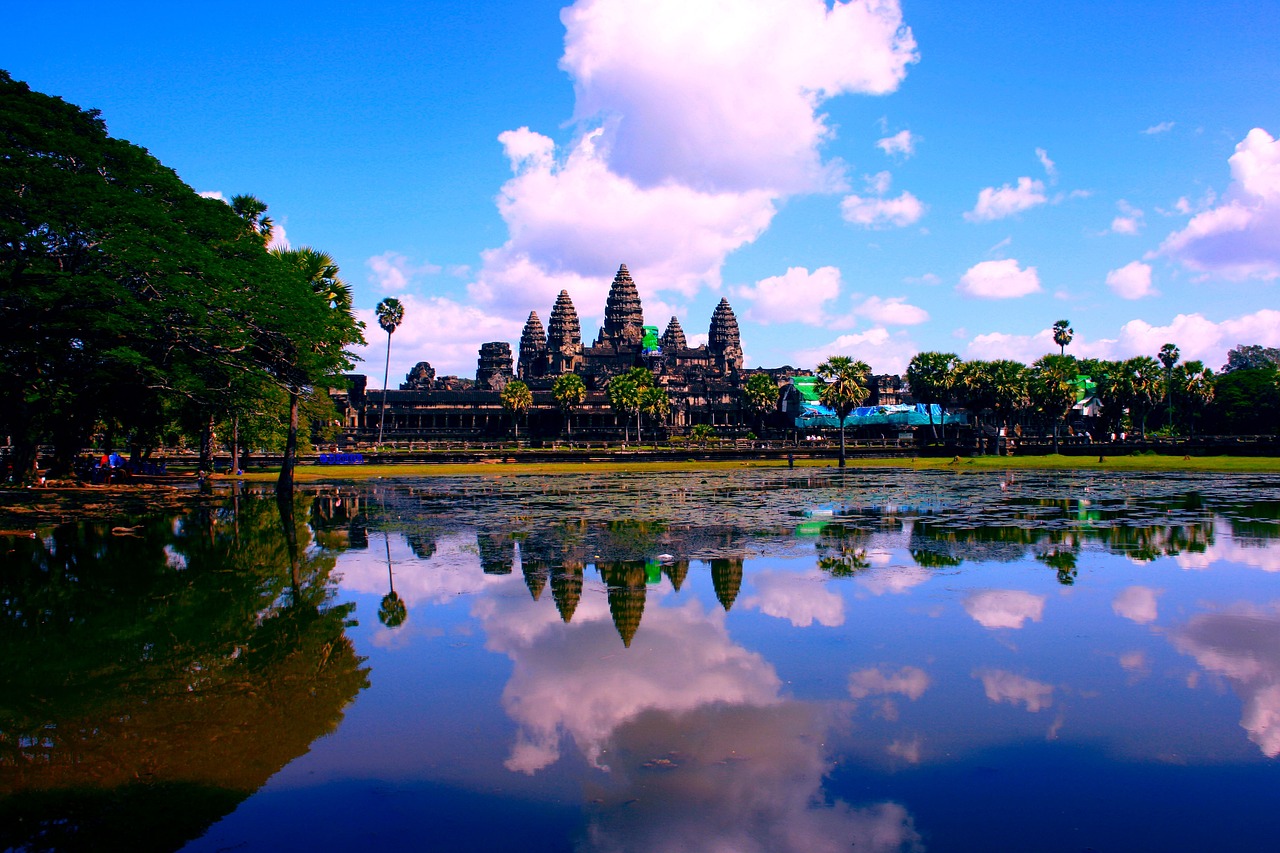
Legacy of the Khmer Empire
As we delve into the legacy of the Khmer Empire, it becomes evident that the empire's influence extends far beyond its historical boundaries. The Khmer Empire's impact on modern-day Cambodia is profound, shaping various aspects of the country's culture, art, language, and traditions.
One of the most enduring legacies of the Khmer Empire is its architectural marvels, particularly exemplified by the majestic Angkor Wat. The intricate carvings, grand temples, and sophisticated engineering of the Khmer structures continue to awe visitors and inspire architects and historians worldwide.
Furthermore, the Khmer Empire's language, Khmer, remains a vital part of Cambodia's identity. The language, with its unique script and rich vocabulary, reflects the cultural heritage of the empire and is still spoken by millions of people in Cambodia and neighboring regions.
Art and literature also bear the imprint of the Khmer Empire, with traditional dances, music, and storytelling techniques drawing inspiration from the empire's rich cultural legacy. The intricate motifs and symbols found in Khmer art serve as a visual link to the empire's glorious past.
Moreover, the religious influences of Hinduism and Buddhism, which permeated the Khmer Empire, continue to shape the spiritual landscape of Cambodia. The fusion of these belief systems with indigenous practices created a unique religious tradition that persists in modern Cambodian society.
Additionally, the governance structures and administrative practices developed by the Khmer Empire have left a lasting impact on Cambodia's political landscape. The empire's centralized authority and elaborate bureaucracy laid the foundation for future governance systems in the region.
In conclusion, the legacy of the Khmer Empire endures through the ages, offering a glimpse into a bygone era of grandeur and sophistication. Its influence on Cambodia's culture, architecture, language, and religious practices serves as a testament to the empire's enduring significance in Southeast Asian history.
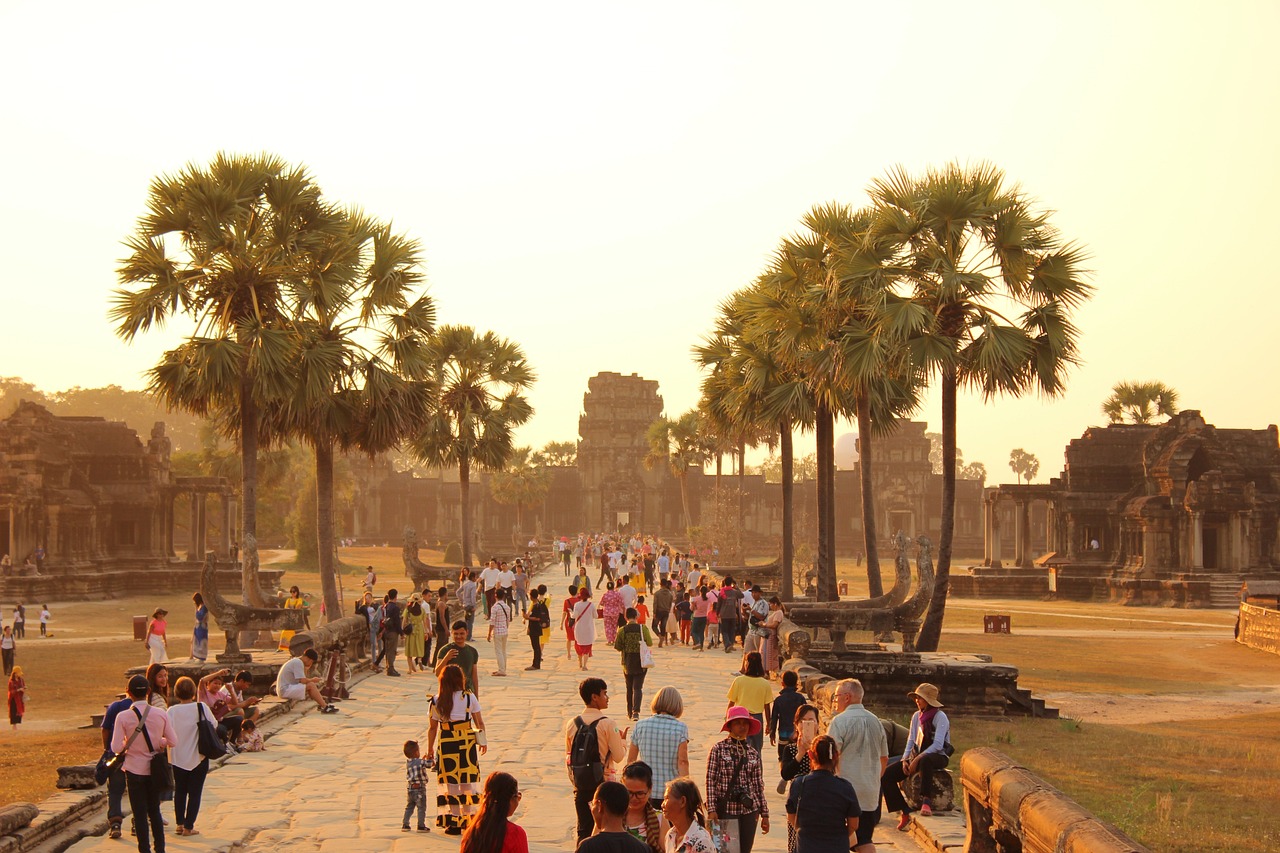
Rediscovery of Angkor
During the 19th century, Angkor, the ancient capital of the Khmer Empire, was rediscovered by Western explorers, sparking a renewed interest in the magnificent temples and ruins hidden within the Cambodian jungle. The French naturalist Henri Mouhot's accounts of the grandeur of Angkor Wat and the surrounding temples captured the imagination of the world, leading to further expeditions to uncover the secrets of this once-thriving civilization.
The rediscovery of Angkor not only unveiled the architectural wonders of the Khmer Empire but also shed light on the rich cultural heritage of Cambodia. The intricate carvings, towering spires, and intricate layouts of the temples fascinated archaeologists and historians, providing valuable insights into the religious, artistic, and technological achievements of the Khmer civilization.
Western fascination with Angkor prompted restoration efforts to preserve and protect these historical sites from further decay and destruction. Conservation projects aimed to safeguard the temples from environmental damage, looting, and the passage of time, ensuring that future generations could marvel at the splendor of Angkor's ancient structures.
The rediscovery of Angkor not only revitalized interest in the Khmer Empire but also contributed to the cultural identity of modern-day Cambodia. The legacy of Angkor continues to inspire artists, architects, and scholars, serving as a reminder of the enduring impact of this once-great empire on the country's heritage and national pride.

Lessons from Khmer History
Reflecting on the tumultuous history of the Khmer Empire offers valuable lessons that transcend time and borders. The rise and fall of this once-mighty civilization serve as a cautionary tale, reminding us of the impermanence of power and the importance of adaptability in the face of changing circumstances. The Khmer Empire's legacy is a testament to the resilience of human ingenuity and the enduring impact of cultural heritage on shaping societies.
One key lesson from Khmer history is the significance of effective governance and leadership. The empire's success was built on the vision and strategic decisions of its rulers, who oversaw a vast and diverse realm through diplomacy, infrastructure development, and cultural patronage. However, as internal conflicts and external pressures mounted, the lack of cohesive leadership ultimately contributed to its downfall.
Furthermore, the experience of the Khmer Empire underscores the importance of environmental sustainability and resource management. The empire's reliance on complex irrigation systems and agricultural practices enabled its prosperity, but deforestation and ecological degradation exacerbated by over-exploitation of natural resources hastened its decline. This serves as a stark reminder of the interconnectedness between human activities and the environment.
Another lesson to be gleaned from Khmer history is the enduring influence of religious and cultural beliefs on societal development. The empire's embrace of Hinduism and later Buddhism not only shaped its artistic and architectural achievements but also provided a unifying framework for social cohesion and moral values. The interplay between religion, governance, and cultural expression highlights the intricate tapestry of human civilization.
Moreover, the downfall of the Khmer Empire serves as a cautionary tale about the perils of hubris and complacency. Despite its grandeur and achievements, internal divisions, external pressures, and environmental challenges eroded the empire's foundations. This serves as a stark reminder that no civilization is immune to the forces of change and that vigilance, adaptability, and humility are essential virtues for long-term sustainability.
In conclusion, the story of the Khmer Empire offers a wealth of insights and lessons that resonate with contemporary challenges and aspirations. By studying its history, we gain a deeper appreciation for the complexities of human civilization, the fragility of power, and the enduring legacy of cultural heritage. The rise and fall of the Khmer Empire stand as a testament to the ebb and flow of history, inviting us to reflect on the past to navigate the present and shape the future.
Frequently Asked Questions
- What were the main reasons for the decline of the Khmer Empire?
The decline of the Khmer Empire was influenced by a combination of internal strife, external invasions, environmental challenges, and a shift in political power. Internal conflicts among ruling factions weakened the empire, while invasions from neighboring kingdoms put further pressure on its resources and territories. Additionally, environmental factors such as droughts and deforestation impacted agricultural productivity, contributing to the empire's downfall.
- How did religion shape the Khmer Empire?
Religion played a significant role in shaping the Khmer Empire, with Hinduism and later Buddhism serving as major influences on its culture, art, and governance. Hinduism, introduced by early rulers, influenced the empire's architecture, rituals, and social hierarchy. The transition to Buddhism brought about changes in religious practices and art forms, reflecting a shift in spiritual beliefs and values within the society.
- What is the legacy of the Khmer Empire in modern-day Cambodia?
The legacy of the Khmer Empire in modern-day Cambodia can be seen in various aspects of Cambodian culture, including its architecture, language, and traditions. The iconic Angkor Wat and other temple complexes stand as enduring symbols of the empire's architectural achievements. Khmer language and cultural practices continue to be celebrated, preserving the rich heritage of the empire in contemporary Cambodian society.






